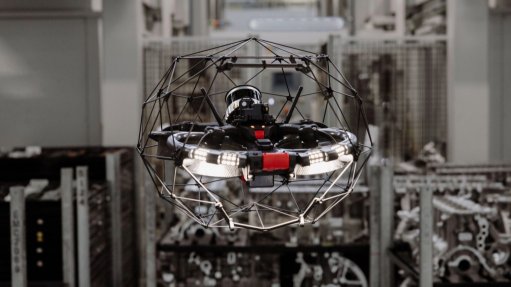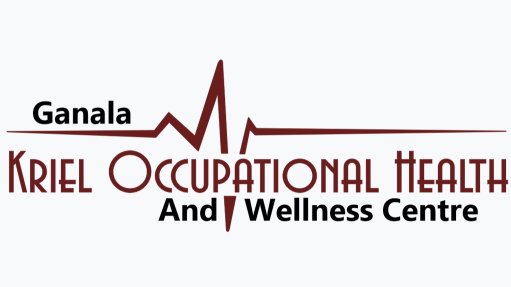Reconceiving South Africa’s water challenge
There is water and there is no water. A physical resource may be abundant, but it is scarce – through waste, poor pricing, inefficient allocation or the inability of human systems to keep up with the latest technologies. A resource may be scarce but it is abundant because more can be done with little. Scarcity is a product of physical and human systems.
To assess the true sustainability of a resource, one has to look at both sides of the coin to fully appreciate water risk and security as material issues on a firm’s or a country’s water balance sheet. South Africa has done well in building engineering infrastructure to get water where it is needed. It has produced abundance from scarcity. For instance, because of the uneven distribution of water, South Africa has a very high rate of basin transfers to get water to where it is needed. There are 28 interbasin transfer schemes with a total transfer capacity exceeding seven-billion cubic metres a year. South Africa is the thirtieth-driest country in the world, although water resources are principally available in the eastern part of the country.
Water scarcity in South Africa has been reduced through significant engineering infrastructure. While water access is close to 94% for the entire South African population, the problem of leaks and water theft place a lot of pressure on management systems and the future availability of water. Water leakage in the eight metros averages 29.7% – ranging from 15.2% in Cape Town to 36.5% in Johannesburg.
Fixing these problems can offer least-cost options to building additional dams and transfer schemes, even though, in some areas, transfer schemes and dams will help alleviate water scarcity problems.
South Africa needs to do much more in terms improving incentives for a shift in water consumption behaviour and driving innovation and technology in the water sector that improves efficiency and productivity in terms of water use.
This raises profound questions about what exactly water scarcity means, as physical scarcity (what you can squeeze out of nature) can be alleviated through good infrastructure and technology, and this, in turn, turn scarcity into abundance.
The behavioural characteristics of the human system can turn availability from abundance into scarcity simply as a result of the underpricing of resources, poor management of the infrastructure and reticulation system and an inability to invest in new infrastructure, innovation and technology.
It would seem that a system’s susceptibility to either scarcity or abundance is a function of the degree to which human systems are degraded or not sufficiently advanced so that the dependence on supply purely from the functioning of the natural system makes the problem of water security and access more pronounced.
We should shift away from just a pure physical resource focus to how institutions foster decision-making that can create conditions that can take us from a path of scarcity to one of abundance. Both sides of the equation tell us the extent to which water is a truly scarce resource owing to physical limitations or human behavioural characteristics. The two sides have to be connected better in planning in order to deal with water-related risks.
It is easy to think of the scarcity problem as a question of resource or material scarcity. What behavioural economics teaches us is that material scarcity can also be a result of psychological and behavioural characteristics that filter through decision-making. Material scarcity can be a paradoxical outcome of resource abundance.
In other words, our desires and wants are greater than what government, the economy or even individuals can generate to satisfy these desire and wants.
Different attributes of physical-human environment interactions suggest different management solutions need to be devised to create more holistic outcomes. For instance, abundance of water supply can be improved with the construction of new infrastructure or through more efficient technologies. But the pace at which these solutions are introduced is often the result of institutional inertia or simply planners adopting a mindset that does not allow new ideas to enter the realm of decision- making.
We also have the problem of bounded rationality – the way information on innovations or ways of doing things flows and is assimilated within organisations also influences how new ideas make their way into decision-making.
A certain cognitive block preserves the existing path dependence and restricts the ability of the human system to be open to new ways of doing things.
It is also possible that the simple intervention of pricing of water appro- priately may signal to firms that water is becoming a constrained resource, which prompts the firms to introduce efficiencies or new sources of water into the system. As a strategy, pricing may also induce firms or utilities to break their path dependence on an existing system and develop new management or technological innovations in an existing water management system.
The point here is to recognise that, while tapping into the physical resource may have been exhausted through extensive engineering, there is still scope to create abundance from scarcity – if we shift the focus onto the institutional and behavioural side of the water management system.
By all accounts, South Africa is a rich country, compared with many African and other developing countries. That said, it has neither infinite resources nor time. Poor decisions, misallocation and misappropriation of funds merely entrench us in a scarcity trap and cause further impoverishment in terms of our material wellbeing.
So, abundance can live paradoxically and side by side with scarcity. This is why some countries do more with less and other countries do less with more. We can only explain this through the eclectic concept of scarcity, as I have proposed we do in our understanding of how we should reconceive the water scarcity problem in the country as being a combined attribute of nature, human engineering and behavioural systems.
Article Enquiry
Email Article
Save Article
Feedback
To advertise email advertising@creamermedia.co.za or click here
Comments
Announcements
What's On
Subscribe to improve your user experience...
Option 1 (equivalent of R125 a month):
Receive a weekly copy of Creamer Media's Engineering News & Mining Weekly magazine
(print copy for those in South Africa and e-magazine for those outside of South Africa)
Receive daily email newsletters
Access to full search results
Access archive of magazine back copies
Access to Projects in Progress
Access to ONE Research Report of your choice in PDF format
Option 2 (equivalent of R375 a month):
All benefits from Option 1
PLUS
Access to Creamer Media's Research Channel Africa for ALL Research Reports, in PDF format, on various industrial and mining sectors
including Electricity; Water; Energy Transition; Hydrogen; Roads, Rail and Ports; Coal; Gold; Platinum; Battery Metals; etc.
Already a subscriber?
Forgotten your password?
Receive weekly copy of Creamer Media's Engineering News & Mining Weekly magazine (print copy for those in South Africa and e-magazine for those outside of South Africa)
➕
Recieve daily email newsletters
➕
Access to full search results
➕
Access archive of magazine back copies
➕
Access to Projects in Progress
➕
Access to ONE Research Report of your choice in PDF format
RESEARCH CHANNEL AFRICA
R4500 (equivalent of R375 a month)
SUBSCRIBEAll benefits from Option 1
➕
Access to Creamer Media's Research Channel Africa for ALL Research Reports on various industrial and mining sectors, in PDF format, including on:
Electricity
➕
Water
➕
Energy Transition
➕
Hydrogen
➕
Roads, Rail and Ports
➕
Coal
➕
Gold
➕
Platinum
➕
Battery Metals
➕
etc.
Receive all benefits from Option 1 or Option 2 delivered to numerous people at your company
➕
Multiple User names and Passwords for simultaneous log-ins
➕
Intranet integration access to all in your organisation


















